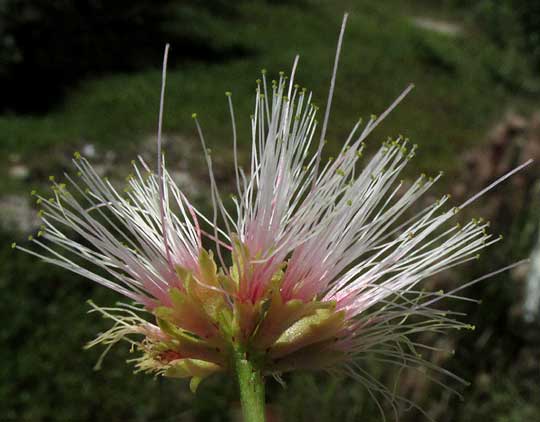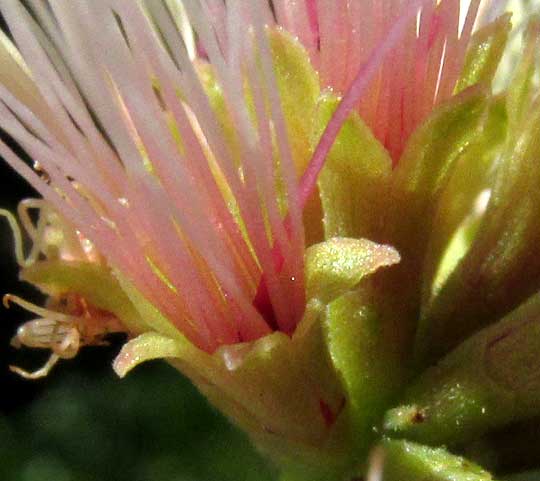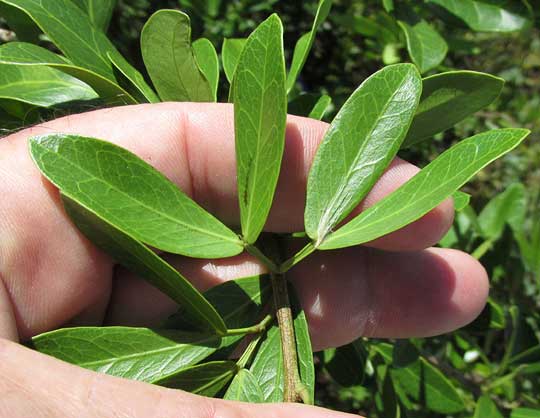Excerpts from Jim Conrad's
Naturalist Newsletter

from the October 26, 2014 Newsletter issued from Río Lagartos, on the Yucatan Peninsula's northern coast (~N21.60°, ~W88.16°), Yucatán state, MÉXICO
BLACKBEADS FLOWERING
In sometimes-flooded ground in the mangroves, growing among Black Mangroves, a dense, much branched, waist-high bush with shiny, leathery leaves bore white, spherical flowering heads issuing a sweet fragrance that put me into the mind of late spring or early summer up north -- something between plum blossom perfume and a freshly cut hay field, just delicious. You can see a branch of it above.
The flowering heads were very like those of the many species of Acacia. Below you can see a close-up of a head showing shaving-brush-like clusters of stamens tipped with tiny, pollen producing filaments, the stamen clusters overtopped by several single styles extending from the ovary nestled in the calyx to beyond the zone of anthers:

Having the styles longer than the filaments encourages visiting pollinators to brush against the styles' stigmas first thing as they approach the flowering cluster, depositing pollen on the stigmas, before continuing into the flower cluster to the zone of anthers where pollen awaits to be dusted onto the pollinator.
Also like acacias, the individual flowers produce numerous -- more than ten -- stamens, as you can confirm below:

However, acacia leaves generally are twice divided and bear many small, confetti-like leaflets. This bush's leaves are twice divided, but in a very peculiar and distinct manner, producing only four fair-sized leaflets, as shown below:

We've seen this interesting combination of acacia-like flowering heads on woody plants with twice-divided compound leaves bearing only four leaflets, on the important tree introduced at www.backyardnature.net/mexnat/pithecel.htm.
That page shows a member of the genus Pithecellobium, species of which are woody plants often known as blackbeads. They're called blackbeads because their beans are hard, shiny and black, serving as beads for anyone needing a pretty, organic necklace. So, here we have another species of blackbead.
This second, mangrove-swamp-loving species is PITHECELLOBIUM KEYENSE, mostly a Caribbean species found along the coast of southern Florida, the Yucatan Peninsula and most Caribbean islands. In US field guides it's often called the Florida Keys Blackbead, but that name won't do down here and in the Caribbean. Sometimes it's also called Rams Horn and Apes Earring because of its curled beans.
Fact is, there just isn't any good, commonly accepted English name. I'd be tempted to call it Mangrove Blackbead, but I read that elsewhere it grows on sand and limestone, in pine woodlands and even in disturbed areas. It seems to be a tough species. It's even sold in garden shops, which makes sense because of its pretty, lustrous, evergreen leaves, its wonderful flower fragrance, and its striking, coiled legumes.